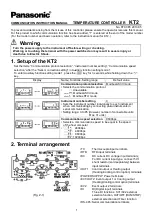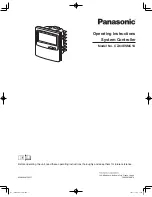16 - 9
IP
N 07
4-
50
5-
P1
E
IC6 Operating Manual
fundamental mode continuously, but also it can be implemented to alternate
between one or more other modes. This interrogation of multiple modes can be
performed as fast as 10 Hz for two modes of the same crystal.
16.1.6 Auto-Z Theory
The one drawback in using
is that the acoustic
impedance must be known. There are several cases where accuracy has to be
compromised because of incomplete or limited knowledge of the material
constants of the deposited materials.
Often the Z-Ratio for the bulk material is different from that of the deposited thin
film. Thin films are especially sensitive to process parameters, particularly in a
sputtering environment. Consequently, the values available for bulk materials
may not be pertinent.
For many exotic materials, including alloys, the Z-Ratio is not known nor easily
available.
There has always been a need to accurately measure layer thickness of
multiple material films using the same crystal sensor. This is particularly true for
multi-layer optical coatings and high-temperature superconductor fabrication.
The effective Z-Ratio of the composite of multi-material layers is not known.
In such cases, the only recourse is to assume the Z-Ratio to be unity (that is,
ignoring the reality of wave propagation in composite media). This false premise
introduces error in the thickness and rate predictions. The magnitude of this error
depends upon the film thickness and the amount of departure of the true Z-Ratio
from unity.
In 1989, A. Wajid became aware of the ModeLock oscillator
7
. He speculated there
might be a relationship between the fundamental and one of the anharmonics
similar to the relationship noted by Benes
8
between the fundamental and the third
quasiharmonic. The frequencies of the fundamental and the anharmonics are very
similar, solving the problem of capacitance of long cables. He found the ideas
needed for establishing the required connections in papers published by Wilson
9
in 1974 and Tiersten and Smythe
10
in 1979.
Contouring a crystal, that is, giving one face a spherical shape, has the effect of
separating the various modes further apart and preventing the transfer of energy
from one mode to another. For the sake of identification it is common to assign
mode [100] to the fundamental, [102] to the lowest frequency anharmonic and [120]
to the next lowest frequency anharmonic. The three indices of the mode
7.U.S. Patent No. 5,117,192 (May 26, 1992) International Patents Pending.
8.E. Benes, J. Appl. Phys. 56(3), 608-626 (1984)
9.C. J. Wilson, J. Phys. d7,2449 (1974)
10.H. F. Tiersten and R.C. Smythe, J. Acoust. Soc. Am., 65(6), 1455 (1979).
Summary of Contents for IC6
Page 1: ...O P E R A T I N G M A N U A L IC6 Thin Film Deposition Controller IPN 074 505 P1E Cover Page ...
Page 2: ......
Page 8: ......
Page 20: ...TOC 12 IPN 074 505 P1E IC6 Operating Manual This page is intentionally blank ...
Page 42: ...1 22 IPN 074 505 P1E IC6 Operating Manual This page is intentionally blank ...
Page 134: ...6 6 IPN 074 505 P1E IC6 Operating Manual This page is intentionally blank ...
Page 148: ...8 4 IPN 074 505 P1E IC6 Operating Manual This page is intentionally blank ...
Page 170: ...9 22 IPN 074 505 P1E IC6 Operating Manual This page is intentionally blank ...
Page 268: ...13 2 IPN 074 505 P1E IC6 Operating Manual This page is intentionally blank ...
Page 312: ...15 40 IPN 074 505 P1E IC6 Operating Manual This page is intentionally blank ...
Page 338: ...A 10 IPN 074 505 P1E IC6 Operating Manual This page is intentionally blank ...
Page 342: ...1 4 IPN 074 505 P1E IC6 Operating Manual This page is intentionally blank ...


















